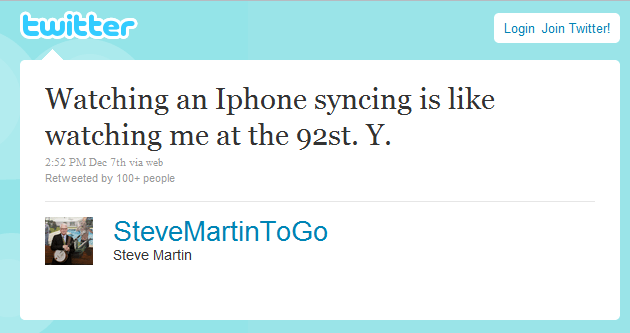
I come here not to bury The Jerk Steve Martin but to praise him.
Last month, The 92nd Street Y hosted a live interview with comedian, actor, composer, writer, and art aficionado Steve Martin. The interview was apparently sold to The Y’s audience as a run-of-the-mill celebrity interview, but neither Martin nor his interviewer were informed of these expectations. Halfway through the event, a note was passed onstage to interviewer and friend of Martin’s, Debora Solomon. This note indicated that audience members—either inside the building or via email from those viewing remotely, perhaps both—were not enjoying the interview as it was being conducted. Ms. Solomon read the note aloud and began fielding audience questions. Afterwards, both Martin and Solomon expressed surprise that The Y, a cultural center, would redirect their discussion about Martin’s recently released, art-world inspired novel (An Object of Beauty) and his longtime love of fine art to his widely publicized career in film and comedy.
That negative opinions were aired via the internet and thereafter managed is hardly news these days; nevertheless, stories popped up quickly on NPR, The New York Times, and elsewhere. Most fault The Y for slighting an American hero. Or legend. Or intellectual. Or really excellent composer for the banjo. Because, in addition to directing the course of the conversation based on real-time audience commentary, The Y later emailed an offer for full credits to ticket buyers who didn’t feel Martin was being entertaining enough or that Solomon wasn’t directing her interview in the best way possible. Martin responded in The New York Times and on Twitter. And shortly afterwards, The Y posted another apology to their further disappointed patrons and slighted guests.
Lessons we can learn from the infamous case of Steve Martin v. The 92nd Street Y:
- Consider your audiences. Customers are not the only people you need to consider when making major (or majorly public) decisions. Consider employees at all levels, from the crew member condemned to carry a controversial critique onstage to the highly celebrated volunteer speaker being publicly impacted by the previously noted note.
- Consider your spaces. Wither your audience goes, so go you. Whether you like it or not, you’re being talked about online. Your story is being told. But who’s telling it, and are you being cast as the protagonist, the antagonist, or maybe the clown? Are critiques valid? Can you (or should you) do anything about them?
- Consider your brand. Maybe your brand has grown stale. Or maybe it never really existed in the first place. Today, consumers have a lot of impact on brands. (Just ask Gap.) Whether it’s time to update or tweak a brand is up to the brand’s stakeholders. Steve Martin has updated his personal brand over time, and has defended it. Sure, Martin may have lost some fans who prefer him enshrined in white suits and cat jokes, but he has grown over time and his brand along with him. Over the years, he’s likely gained more discerning, more committed fans. But should The Y have shifted from “cultural center” to “celebrity news”?
- Be considerate. Apologies come in a wide variety of tones and depth. Being considerate of how your various audiences might react to your words and actions is all you need. Oh, and this. But that’s all.
Let’s get serious. I’m writing this article as an excuse to think about how much I appreciate Steve Martin and his work. If you’re a fan of language, you’re a likely fan of Steve Martin—both the Steve Martin who did wild and crazy stand up comedy and the Steve Martin who is an author of essays, novels, plays, films, bluegrass tunes, and tweets. In all of his personal incarnations and work genres over the years, Steve Martin has delivered exactly what he has always delivered: stories that are both a little sweet and a little sad; words that are lyrical, rhythmic, and clever; and intelligent humor. He’s consistent without being stagnant. Steve Martin is not Jeff Foxworthy, so don’t expect his punch lines to come at you from the front with plenty of fair warning. You’ve got to pay close attention to be touched by Steve Martin’s work; you don’t bust a gut reading/watching Shopgirl, though it’s a little funny. Same goes for Hamlet.
In the drama of The 92nd Street Y and Steve Martin, The Y wrote itself into the story…playing foil to the clown.
(TOP SECRET message to Steve: You would be warmly welcomed to talk about whatever you like in your home state of Mississippi.)
